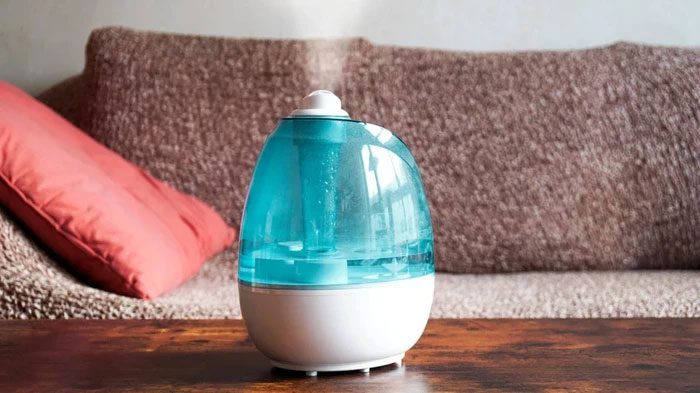During hot days, air conditioning is a “lifesaver” that helps us combat the heat. However, continuous use of air conditioning can affect the skin, nose, or throat. In particular, the dry air flow in a room when using air conditioning can cause nasal dryness.
So, how can we improve and prevent nasal dryness due to air conditioning?
1. Causes of Nasal Dryness When Using Air Conditioning
The main reason we experience nasal dryness while using air conditioning is due to low humidity.
The way air conditioners work is by blowing out cool but dry air. This means that if you stay in an air-conditioned environment for an extended period, your ears, nose, and throat may be affected due to significant moisture loss. This can dry out the mucous membranes in the middle ear and nasal passages. The function of these mucous membranes is to filter bacteria to prevent them from entering the inner ear and other parts of the body. If they do not operate normally, bacteria can invade through the nose and end up deep in the ear via the network of tubes connecting both sides.
Thus, spending too much time in air conditioning not only dries out the nose but can also lead to ear infections, throat dryness, and loss of skin moisture.

Low humidity is the reason we experience nasal dryness when using air conditioning. (Photo: Internet).
2. How Does Nasal Dryness Affect Health?
Apart from discomfort and pain, nasal dryness is rarely serious, but if the condition persists for a long time, it can lead to several issues such as:
- Irritation in the nose, causing discomfort and creating conditions for bacteria, viruses, and mold to easily invade and cause illnesses like colds, flu, and allergic rhinitis…
- Affecting the sinuses, especially for those with sinus issues, who will feel more pain and discomfort.
- Excessive dryness and irritation can cause the skin inside the nose to crack and lead to nosebleeds.
3. Ways to Alleviate Nasal Dryness When Using Air Conditioning
To alleviate nasal dryness while using air conditioning, you can apply some home remedies such as:
- Using a humidifier to add moisture to the air. This helps maintain moisture for the nose, throat, and skin, preventing damage to these areas.
Note, when using a humidifier in the room, place it in an open area with few items to avoid dampening objects, which can cause damage or mold in the room.
- Drinking plenty of water will help rehydrate and maintain moisture in the body. When sitting in air conditioning, you can sip small amounts regularly.
- Steam inhalation is also a method to help moisturize the nose. To steam, prepare a small basin of clean hot water, then lean over and maintain this position to inhale the steam for a few minutes. You can also use a large towel to cover your head.
However, when steaming, keep your face about 20 – 30 cm away from the basin to avoid burns, and do not steam excessively, as overuse of this method can worsen nasal dryness.
- Using nasal sprays can help “lubricate” the mucous membranes, moisturize the nose, and clean it by removing irritants.

A humidifier helps increase humidity in the air and keeps the nose and throat moist while using air conditioning. (Photo: Internet).
4. Proper Use of Air Conditioning to Prevent Nasal Dryness
To prevent nasal dryness and other health issues when using air conditioning, you should keep the following in mind:
- Maintain distance from the air conditioning unit; avoid direct exposure of your body or the ear, nose, and throat to air from the air conditioner.
- Regularly rinsing the nose can help keep the mucous membranes functioning well, protecting the nasal passages.
- Use a humidifier or place a basin of water in the room while using air conditioning.
- Set the air conditioning temperature between 26 and 29 degrees Celsius; avoid setting it too low.
- If possible, use air conditioning only when the temperature is high; in the evenings when temperatures drop, use a fan or take advantage of fresh air.
Why Do Dutch People Often Not Use Curtains at Home?
Man Catches a “Monster” in the River with His Bare Hands
The “Unique Treasure” from a 4,600-Year-Old Queen Reveals Something Amazing


















































